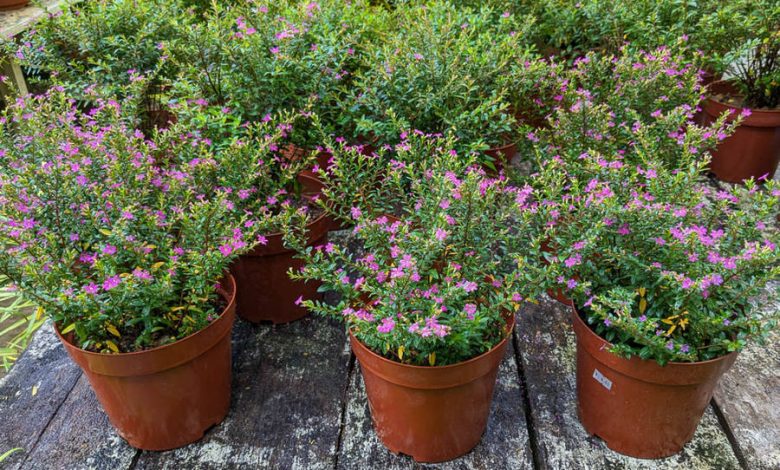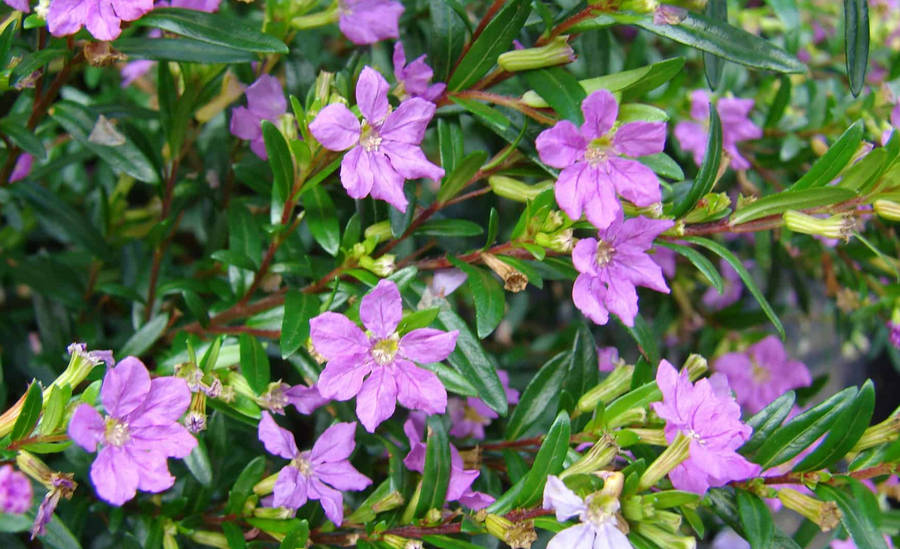Mexican Heather Plant Care: From Cultivation to Common Challenges

The Mexican Heather plant, also known as False Heather (Cuphea hyssopifolia), is a popular ornamental plant cherished for its delicate, feathery foliage and small, vibrant flowers. Native to Mexico, Guatemala, and Honduras, this perennial shrub is a favorite in gardens and landscapes around the world. Known for its hardiness and low maintenance, Mexican Heather adds a splash of color and texture to any garden. This article delves into the characteristics, cultivation, benefits, and common issues related to the Mexican Heather plant.
Characteristics of Mexican Heather Plant
Appearance and Growth Habit
Mexican Heather is a small, bushy shrub that typically reaches a height of 1 to 2 feet with a similar spread. Its fine-textured, evergreen foliage forms a dense mound, making it an excellent choice for ground cover or border planting. The leaves are small, lance-shaped, and dark green, providing a lush backdrop for the plant’s vibrant blooms.
Flowers and Blooming Season
One of the standout features of the Mexican Heather plant is its profusion of tiny, tubular flowers. These blooms come in shades of purple, lavender, pink, and occasionally white, adding a continuous burst of color from spring through fall. The flowers are attractive to bees, butterflies, and other pollinators, making Mexican Heather a valuable addition to pollinator-friendly gardens.
Cultivating Mexican Heather
Ideal Growing Conditions
Mexican Heather thrives in a variety of conditions, but for optimal growth, it prefers:
- Sunlight: Full sun to partial shade. It performs best with at least 6 hours of direct sunlight per day.
- Soil: Well-drained soil with a slightly acidic to neutral pH. It can tolerate a range of soil types but prefers loamy or sandy soils.
- Water: Regular watering to keep the soil consistently moist but not waterlogged. Once established, it can tolerate short periods of drought.
Planting Mexican Heather
To plant Mexican Heather, follow these steps:
- Choose a Location: Select a spot in your garden that receives plenty of sunlight and has well-draining soil.
- Prepare the Soil: Amend the soil with organic matter, such as compost, to improve drainage and fertility.
- Planting: Dig a hole slightly larger than the root ball of the plant. Place the plant in the hole, ensuring the top of the root ball is level with the soil surface. Fill in around the roots with soil and water thoroughly.
- Mulching: Apply a layer of mulch around the base of the plant to retain moisture and suppress weeds.
Care and Maintenance
Mexican Heather is relatively low-maintenance, but a few care tips can help ensure its health and longevity:
- Watering: Water regularly, especially during dry spells. Avoid overhead watering to prevent fungal diseases.
- Fertilizing: Feed with a balanced, slow-release fertilizer in the spring and mid-summer to encourage vigorous growth and flowering.
- Pruning: Light pruning in early spring helps maintain a compact shape and encourages new growth. Remove spent flowers to promote continuous blooming.
- Pest and Disease Control: Mexican Heather is generally pest-resistant, but watch for aphids, spider mites, and fungal issues. Treat any problems promptly with appropriate organic or chemical controls.

Benefits of Growing Mexican Heather
Aesthetic Appeal
Mexican Heather’s delicate foliage and colorful flowers make it a visually appealing addition to any garden. It works well in various landscape settings, including borders, rock gardens, and container plantings.
Attracts Pollinators
The abundant flowers of Mexican Heather are a magnet for bees, butterflies, and hummingbirds. By planting Mexican Heather, gardeners can support local pollinator populations and enhance biodiversity in their gardens.
Low Maintenance
Once established, Mexican Heather requires minimal care, making it an excellent choice for gardeners of all experience levels. Its drought tolerance and resistance to pests and diseases further contribute to its low-maintenance nature.
Versatility
Mexican Heather’s compact size and adaptability make it suitable for a wide range of garden uses. It can be planted as a ground cover, edging plant, or in mixed borders. It also thrives in containers, making it a versatile option for patios and balconies.
Common Issues and Solutions
Yellowing Leaves
Yellowing leaves on Mexican Heather can be a sign of overwatering or poor drainage. Ensure the plant is in well-draining soil and adjust watering practices to prevent waterlogged conditions. If the soil is compacted, consider amending it with organic matter to improve drainage.
Wilting or Drooping
Wilting or drooping leaves may indicate underwatering, root rot, or extreme heat stress. Check the soil moisture level and adjust watering accordingly. If root rot is suspected, improve soil drainage and reduce watering frequency.
Pests
Although Mexican Heather is relatively pest-resistant, it can occasionally attract aphids and spider mites. To control these pests, use insecticidal soap or neem oil, and encourage beneficial insects like ladybugs to help keep pest populations in check.
Fungal Diseases
Fungal diseases such as powdery mildew and root rot can affect Mexican Heather, particularly in humid conditions or poorly drained soils. To prevent fungal issues, avoid overhead watering, provide adequate spacing between plants for air circulation, and use fungicidal treatments if necessary.
Conclusion
The Mexican Heather plant (False Heather) is a charming and versatile addition to any garden, offering aesthetic appeal, low maintenance, and ecological benefits. Its delicate foliage and vibrant flowers make it a standout choice for a variety of landscape applications, from borders and ground covers to container plantings. By understanding its growing requirements and potential issues, gardeners can enjoy the beauty and resilience of Mexican Heather for many years. Whether you’re an experienced gardener or a novice, the Mexican Heather plant is sure to bring a touch of natural elegance and vibrancy to your outdoor space.
The Mystique of the Gumshoe Plant: A Botanical Enigma
Cherry Tomato Yellow Plant : A Comprehensive Guide to Growing and Caring for Your Garden
